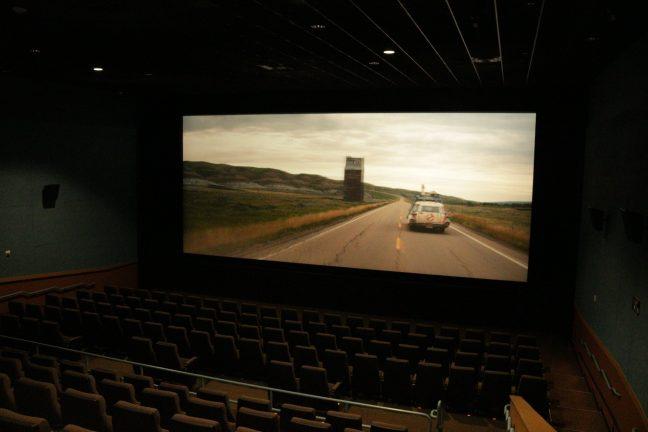This article contains SPOILERS for Spider-Man: No Way Home.
In an era of incessant reboots and endless nostalgic content, I was wary of the latest installment in the Marvel Cinematic Universe’ Spiderverse.
Having been disappointed one too many times, it is clear to me a film cannot succeed based on nostalgia alone. An attempt to prop up a franchise solely on “remember this?” leads only to disgruntled fans and flops.
From Star Wars’ pathetic disheveled attempt at a third trilogy to “Ghostbusters: Afterlife”, the unique genre of films filled with flimsy callbacks and unjustified cameos has not impressed. But, “Spider-Man: No Way Home” stands out as the blueprint for how to do fan service the right way.
The film follows Tom Holland’s Peter Parker after his identity gets revealed to the world. This creates many challenges for Parker and his friends, their top-choice college, MIT, refusing to consider them. But when Parker enlists Dr. Strange’s help in casting a spell that would make everyone forget Spider-Man’s identity, things go awry and villains from other universes — a.k.a. the past Spider-Man franchises featuring Tobey Maguire and Andrew Garfield as Peter Parker — begin to show up in Holland’s Spider-Man’s world.
As Holland’s Parker captures the villains, he learns they will all die fighting Spider-Man when sent back to their universes, so he resolves to “cure” them of the things that made them evil before sending them home. He gets help from his friends MJ Watson and Ned Leeds as well as the two Spider-Men from other universes — Maguire and Garfield — whose villains have crossed over.
Yes, despite their best attempts to deny it, Maguire and Garfield are in this movie — and they killed it.
One of the things that made this film so successful was the actors in this movie wanted to be there. Alfred Molina and Jamie Fox, both reprising roles as villains from previous films give great performances. Willem Dafoe, who reprises his role as Norman Osborne/Green Goblin from the 2002 Spider-Man film featuring Maguire, was clearly excited to play this character again. In fact, Dafoe has said in interviews that his stipulation for coming back to the Spiderverse was simply that he be allowed to do as many of his own stunts as possible, out of love for the craft of acting.
Maguire was the awkward Parker we know from his franchise, but with the wisdom and calm that comes with age. But the stand out role reprisal came from Garfield. Despite getting dealt a bad hand with the weak “The Amazing Spider-Man” films, the actor has always been extremely passionate about playing the character of Spider-Man. His adoration for the character of Peter Parker came through in vivid detail on screen and has even prompted some fans to call for a third Amazing Spider-Man film.
But what really made this movie great was not just the returning actors’ excitement, but a script and storyline that gave them a good reason to be there and that stuck to the heart of who Spider-Man is.
Though it’s obvious the plot was partially written as a way to bring in some nostalgia and fan service, it is not completely gratuitous. The idea of the multiverse had been introduced previously in the MCU and in “Spider-Man: Into the Spiderverse.”
The plot also takes the characters and their arcs into account. All of the villains get redemption arcs and we get to see them interacting with their original Spider-Men. As for Maguire and Garfield’s characters, they also get to round out their storylines.
For Maguire’s Spider-Man, this means stopping Holland’s Parker from killing Osborne in a fit of vengeance, saving Holland’s Parker from the guilt Maguire’s Spider-Man felt after not being able to save his best friend’s father. For Garfield’s Peter, this came to an emotional head when he was able to save Watson the way he could not save his own love interest, Gwen Stacy.
These nostalgic characters showed up in the movie and had their stories continued in it, giving their presence legs to stand on.
The callbacks to previous Spider-Man franchises were classy and meaningful. There were no dangling appearances of random items or clunky recycled lines. The only exception of this is Norman Osborne’s declaration, “I’m something of a scientist myself,” which came across as endearing rather than contrived.
Perhaps the most emotional callback of all came in the iconic line Holland’s Spider-Man had yet to hear, “with great power, there must also come great responsibility,” uttered by Aunt May as she died. This gave the heartbreaking scene even more depth as we realize Holland’s Parker has finally become the character we know and love.
This transition from the teenage Avengers-era Spider-Man we’ve seen in the MCU to the loner young-adult Spider-Man we know from previous franchises and comics is solidified with the end of the film. With everyone forgetting the existence of Peter Parker and on the tails of his interactions with older, wiser Spider-Men, Peter chooses to take on the world alone in order to protect those who he loves. This was a key development in the character of Peter Parker and a perfect ending to this film.
“Spider-Man: No Way Home” was successful because it used nostalgia to further the arc of a previously well-established character in Holland’s Peter Parker. Yes, it was totally awesome to see all three Spider-Men swinging around fighting villains together, but it was more than just fan service. It was a love letter to the world of Spider-Man done right.


